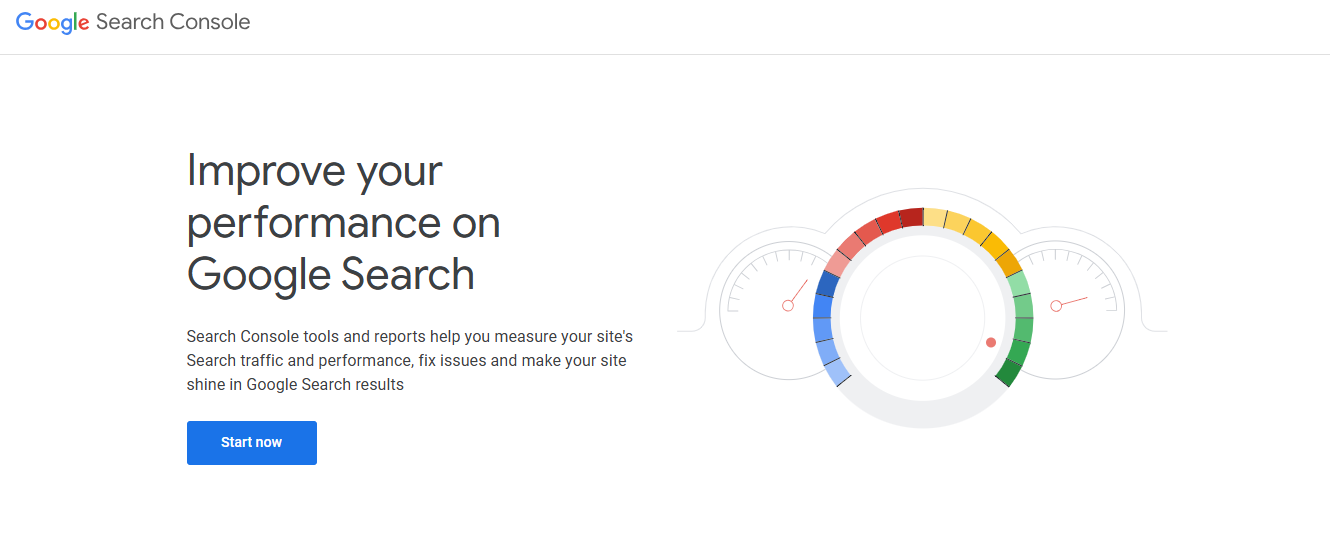- Mobile-first SEO is the practice of optimizing a website primarily for mobile devices, which Google uses for crawling, indexing, and ranking.
- This shift is driven by the fact that over 60% of global web traffic comes from mobile devices.
- Key practices include a mobile-friendly responsive design, consistent content across mobile and desktop, and optimizing for page speed.
- Improving the mobile user experience with easy navigation and touch-friendly elements is crucial.
- Mobile-first SEO is a requirement for maintaining visibility and success, not just a trend.
Optimizing for mobile-first SEO is foundation of successful search engine visibility.
As Google now relies almost exclusively on the mobile version of a website’s content for indexing and ranking, any gap in mobile optimization can directly impact your performance in search results.
The numbers speak for themselves.
According to Statista, over 60% of global web traffic now comes from mobile devices, and this figure continues to grow year over year.
In some industries like retail and local services, mobile traffic accounts for more than 77% of all visits.
Google’s own research reveals that 53% of mobile users abandon a site that takes longer than three seconds to load, which ties directly into rankings via Core Web Vitals and page experience signals.
Google officially completed its mobile-first indexing rollout in late 2023, meaning that sites not optimized for mobile are likely already seeing negative SEO consequences.
Despite this, many websites still serve stripped-down, slow, or poorly structured mobile experiences that hinder both search rankings and user engagement.
This guide is designed to walk you through everything you need to know about mobile-first SEO.
Let’s get started!
Google Thinks Mobile-First. So Should You.
Nexa Growth optimizes your site for mobile speed, UX, and structure to boost visibility where it matters most.
Contact UsWhat Is Mobile-First SEO?
Mobile-first SEO is the practice of optimizing a website primarily for mobile devices rather than desktop.
It aligns with Google’s mobile-first indexing approach, where the mobile version of a site is treated as the primary version for crawling, indexing, and ranking.
In other words, Google looks at your mobile site content first when deciding how your site should rank in search results.
This shift stems from changing user behavior. Mobile search has outpaced desktop for several years now.
To ensure users get the best experience, Google prioritizes content that performs well on smartphones and tablets.
Mobile-first SEO isn’t just about having a site that works on mobile—it’s about building your entire SEO strategy with the mobile user in mind.
That includes everything from content structure and loading speed to user interface and technical SEO elements.
A mobile-first approach means you should design, write, and test your site for mobile before scaling it to desktop.
It requires ensuring consistency in content, metadata, structured data, and performance between mobile and desktop experiences, with the mobile version always taking priority.
Understanding Mobile-First Indexing
Mobile-first indexing refers to Google’s practice of using the mobile version of a webpage as the starting point for indexing and ranking.
Before this shift, Google primarily indexed the desktop version of a site, which often led to discrepancies when the mobile version had less content or a different layout.
Google began rolling out mobile-first indexing in 2016 and steadily expanded it over several years. By October 2023, mobile-first indexing became the default for all websites.
According to Google Search Central, this means the mobile version is now the only version Google uses to determine search rankings, even if a desktop version exists.
This change has significant implications. If the mobile version of your site lacks important content, has poor usability, or is blocked from being crawled, your entire site’s performance in search results can suffer.
It’s no longer acceptable to treat the mobile site as a secondary or simplified experience. Instead, it must include the same valuable content, metadata, structured data, and internal linking as the desktop site.
In practical terms, mobile-first indexing affects how your site is crawled (Googlebot primarily uses a mobile user agent), how it’s ranked (based on the mobile experience), and how it’s displayed in search results (pulling titles, snippets, and previews from the mobile version).
Site owners can check whether their site is being indexed with a mobile-first approach by using the URL Inspection Tool in Google Search Console.
If the primary crawler listed is “Googlebot smartphone,” mobile-first indexing is active for that site.
Understanding this indexing model is essential to optimizing your SEO strategy. Without a properly optimized mobile experience, it’s likely your rankings—and user satisfaction—will take a hit.
Featured Article: Mobile-First Indexing: How to Optimize Your Site in 2025
Why Mobile-First SEO Is Crucial
Mobile-first SEO is no longer just an industry best practice—it’s a requirement for maintaining visibility in search.
With mobile-first indexing now fully implemented, websites that fail to prioritize mobile experience risk falling behind in both rankings and user engagement.
One major reason for this shift is user behavior. Mobile internet usage has surged across all demographics.
According to Datareportal’s 2024 report, over 96% of internet users access the web through a mobile device at least some of the time, and roughly 55% use mobile exclusively.
That means the majority of your potential visitors are seeing your site on a small screen, often while multitasking or on the go.
From an SEO perspective, Google has made it clear that mobile usability is a key ranking signal. Sites that are difficult to navigate on mobile, load slowly, or offer a poor user experience will likely see lower rankings in mobile and desktop search results alike.
Google’s Core Web Vitals—metrics that measure loading speed, interactivity, and visual stability—are evaluated separately for mobile and desktop, and a poor score on mobile can directly impact your visibility.
Beyond rankings, mobile-first SEO affects key business metrics like bounce rates, time on page, and conversion rates.
For instance, Google reports that a one-second delay in mobile load time can reduce conversions by up to 20%.
In industries like e-commerce, where most transactions now originate from mobile devices, even small performance gaps can result in significant lost revenue.
Investing in mobile-first SEO also prepares your site for future trends, such as voice search, mobile-first AI features in search results, and location-based discovery.
Each of these developments assumes a strong mobile foundation.
In short, mobile-first SEO is not just about adapting to Google’s changes—it’s about aligning with how people actually use the web today. If your site doesn’t perform well on mobile, it won’t perform well at all.
Featured Article: Core Web Vitals: How to Optimize for Better Performance in 2025
Mobile-First SEO Best Practices
Optimizing for mobile-first SEO requires more than simply having a mobile-friendly site.
It involves a strategic approach to design, content, speed, and technical performance to ensure that your mobile experience matches—or exceeds—your desktop version in quality and usability.
Below are the most important best practices to follow in 2025.
-
Build a Mobile-Friendly, Responsive Design
Responsive design is the cornerstone of mobile-first SEO. A responsive website automatically adapts its layout and elements based on the screen size and device being used.
This ensures that users on smartphones and tablets get the same core experience as those on desktops.
Google recommends responsive design over separate mobile URLs or dynamic serving because it’s easier to maintain and provides a consistent user experience.
Make sure that all content, including headers, images, and interactive elements, scales correctly and remains readable without zooming or horizontal scrolling.
You can test your site’s mobile-friendliness using Google’s Mobile-Friendly Test tool or by running a full audit in Search Console.
-
Keep Key Content Consistent Across Devices
Many sites mistakenly hide or simplify content on their mobile version to reduce visual clutter.
While this may improve aesthetics, it can hurt SEO if critical information—like product descriptions, internal links, or metadata—is missing.
Google indexes the content it finds on your mobile site, so anything that isn’t there won’t be considered for ranking.
Always include the same primary content, structured data, title tags, meta descriptions, and schema markup on both mobile and desktop.
Avoid collapsing or hiding content in accordions unless it’s done for usability. If the content is visible and accessible on user interaction, Google can still index it, but it’s best to ensure high-value content is immediately available.
-
Optimize Mobile Page Speed and Performance
Mobile users expect fast-loading pages. According to Google, the probability of a bounce increases by 32% as page load time goes from one to three seconds.
On mobile connections, even small delays can lead to abandoned visits.
Use tools like Google PageSpeed Insights and Lighthouse to identify and fix speed issues. Common areas to optimize include:
- Compressing images and serving them in next-gen formats like WebP
- Eliminating render-blocking JavaScript and CSS
- Enabling browser caching and content delivery networks (CDNs)
- Minimizing server response time
Also, prioritize Core Web Vitals, especially Largest Contentful Paint (LCP), First Input Delay (FID), and Cumulative Layout Shift (CLS), with an emphasis on mobile measurements.
-
Improve Mobile UX and Navigation
A great mobile user experience goes beyond speed. It also includes easy navigation, touch-friendly buttons, and clear visual hierarchy.
Use larger tap targets for navigation and CTAs to reduce accidental clicks. Keep menus simple and accessible—hamburger menus are common, but make sure they’re easy to open and navigate.
Consider sticky headers or back-to-top buttons for longer content pages.
Avoid elements that obstruct the screen, like intrusive pop-ups or full-screen interstitials, as these can lead to penalties under Google’s page experience guidelines.
-
Handle Technical SEO for Mobile
Technical SEO must be mobile-aware. Key areas to focus on include:
- Viewport Configuration: Always define a viewport meta tag to ensure proper scaling on mobile devices.
- Robots.txt and Crawling: Make sure the mobile version of your site isn’t blocked by robots.txt and that all assets like CSS and JavaScript are crawlable.
- Structured Data: Apply the same structured data markup to both mobile and desktop. Ensure mobile pages use correct schema for rich results.
- Canonical Tags: Use consistent canonical tags across mobile and desktop to avoid duplicate content issues.
By following these mobile-first SEO best practices, you ensure your site is not only crawlable and indexable but also provides an exceptional user experience that drives traffic, engagement, and conversions.
Tools and Audits to Evaluate Mobile SEO
To effectively optimize for mobile-first SEO, it’s critical to regularly evaluate your site’s mobile performance using reliable tools and audits.
These assessments help identify issues that may affect your rankings or user experience on mobile devices. Below are key tools and strategies to monitor and improve your mobile SEO health.
Use Site Audit Tools
Comprehensive site audit tools allow you to scan your entire website for mobile-specific issues, including crawl errors, slow-loading pages, unoptimized content, and structural inconsistencies.
Some of the most effective tools include:
- Google Search Console: Offers a Mobile Usability report that flags issues like clickable elements too close together or content wider than the screen.

Google Search Console’s Webpage - Semrush Site Audit: Highlights mobile SEO issues such as missing viewport tags, oversized elements, and Core Web Vitals failures.

Semrush’s Webpage - Ahrefs Site Audit: Offers mobile-specific insights into internal linking, mobile-friendliness, and content gaps.

Ahrefs’ Webpage - Screaming Frog SEO Spider: Can simulate mobile crawling and analyze the structure and content of your mobile site version.

Screaming Frog’s Webpage
These tools help ensure that your mobile experience aligns with Google’s best practices and alert you to problems before they impact search rankings.
Test Mobile Page Experience Metrics
Google’s Page Experience signals play a major role in mobile-first SEO. These include Core Web Vitals—metrics that assess the speed, interactivity, and layout stability of your site on mobile devices.
- PageSpeed Insights: Provides performance scores and suggestions specifically for mobile and desktop. Pay attention to metrics like First Contentful Paint (FCP), Largest Contentful Paint (LCP), and Cumulative Layout Shift (CLS).
- Lighthouse: A Chrome DevTools audit tool that offers in-depth reports on performance, accessibility, SEO, and best practices for mobile.
- WebPageTest: Allows for real-device testing on different mobile networks to simulate real-world performance.
- Google Search Console Core Web Vitals Report: Segments performance data by mobile and desktop and highlights any URLs that fall below Google’s thresholds.
When auditing, prioritize fixes that directly impact mobile user experience, such as slow server response times, uncompressed images, and JavaScript-heavy pages.
Regularly auditing your mobile SEO setup ensures your site stays compliant with evolving standards and continues to provide a seamless experience for mobile users.
Featured Article: How to Use robots.txt to Manage Search Engine Crawlers
Common Mobile-First SEO Mistakes to Avoid
While implementing mobile-first SEO best practices, it’s crucial to be aware of common mistakes that can undermine your efforts.
These errors can lead to ranking drops, user frustration, and missed opportunities. Below are some of the most frequent mobile-first SEO pitfalls and how to avoid them.
-
Hiding or Omitting Important Content on Mobile
One of the biggest mistakes is hiding or removing valuable content on the mobile version of your site to make it appear “cleaner” or more streamlined. However, this can lead to significant SEO problems.
Google indexes the mobile version of your site, so any content that is hidden or missing on mobile (e.g., via collapsible menus, accordions, or tabs) will not be crawled or considered for ranking.
Always ensure that key content, including product descriptions, internal links, and multimedia, is available on both mobile and desktop versions.
-
Using Intrusive Interstitials
Interstices like pop-ups or full-screen ads that appear on mobile devices can interfere with user experience and harm SEO rankings.
Google penalizes sites that show intrusive interstitials, especially if they block access to the main content.
Instead, use banners or smaller, less disruptive ad formats that allow users to easily dismiss or interact with the content.
Make sure that users can immediately access the page’s core content without excessive barriers.
-
Ignoring Mobile-Specific Crawl Errors
Mobile-first indexing relies on the mobile version of your site being crawlable by Googlebot.
If your mobile site has crawl errors, blocked resources, or unoptimized technical settings, Google may not be able to fully index your site, negatively affecting rankings.
Check your robots.txt file to ensure that important resources like CSS, JavaScript, and images are accessible to crawlers.
Additionally, make sure your mobile site’s pages are not blocking any significant content or links that could impact SEO performance.
-
Failing to Test Across Real Devices
While using emulators and simulators for mobile testing is helpful, they don’t always accurately replicate how your site performs on real mobile devices.
Real-world performance can vary based on factors like device specifications, browser versions, and network conditions.
To get the most accurate picture of how your site performs, test your mobile site on a variety of devices and browsers.
You can also use tools like BrowserStack or physical testing to check your mobile experience across multiple platforms and networks.
-
Not Optimizing for Core Web Vitals on Mobile
Core Web Vitals are critical for mobile-first SEO.
These metrics—Largest Contentful Paint (LCP), First Input Delay (FID), and Cumulative Layout Shift (CLS)—assess how quickly a page loads, how responsive it is, and how visually stable it appears during load.
Poor performance in any of these areas can result in lower rankings and a worse user experience.
Many sites prioritize desktop performance over mobile, but Google now evaluates Core Web Vitals separately for mobile and desktop versions.
Make sure your mobile site meets the recommended thresholds for each metric to avoid ranking penalties and improve user satisfaction.
-
Overlooking Mobile-First Content Strategy
It’s essential to keep in mind that mobile-first SEO is not just about how a site looks—it’s also about how content is structured and delivered.
Mobile users tend to have different behavior patterns than desktop users: they are often looking for quick answers, bite-sized content, and faster load times.
Make sure your content is mobile-optimized by:
- Using clear, concise headlines and subheadings for easy scanning
- Breaking up long paragraphs into smaller, digestible chunks
- Prioritizing key information above the fold
- Including large, legible fonts and intuitive navigation
In addition, consider optimizing content for voice search, which is growing rapidly on mobile devices. Focus on natural language queries and FAQs that mirror how people speak when using voice assistants.
By avoiding these common mistakes, you can ensure that your mobile-first SEO strategy is effective and aligned with Google’s evolving standards.
Mobile-First Isn’t a Trend—It’s the Rule
With Nexa Growth, your site becomes lightning-fast, fully responsive, and SEO-friendly on every device.
Contact UsAdapting for the Future of Mobile SEO
As the digital landscape continues to evolve, mobile-first SEO will need to adapt to emerging trends and technologies.
Staying ahead of the curve will ensure that your website not only remains competitive but also provides a top-tier experience for mobile users.
Below are some key developments to keep an eye on and incorporate into your mobile SEO strategy.
-
The Impact of AI and Generative Search
Artificial intelligence (AI) is transforming how users interact with search engines, and this shift is especially relevant for mobile search.
Google is increasingly incorporating AI features such as conversational search and automated answers, which require a deeper understanding of content context, structure, and intent.
For mobile SEO, this means optimizing for:
- Featured snippets: Structured data, concise answers, and clear formatting can help your content be selected for snippets.
- Answer boxes and People Also Ask: Implementing FAQ schema and targeting common questions ensures your content is part of these features.
- Voice search: With the rise of virtual assistants like Google Assistant, voice search is becoming more important. This search type tends to be more conversational, so focusing on long-tail, natural language keywords is critical.
Optimizing for AI-driven search results requires a shift in how we structure content to provide immediate answers and more contextually rich responses, making it a vital part of future mobile-first SEO strategies.
-
The Growing Role of Voice Search in Mobile
Voice search usage continues to rise as mobile users turn to voice assistants for quick answers, especially when on the go.
To optimize for voice search on mobile:
- Focus on natural language and conversational keywords.
- Target question-based queries (e.g., “How do I fix a leaky faucet?”).
- Optimize for local search since voice queries often include location-specific information (e.g., “Where is the nearest coffee shop?”).
Incorporating these elements will increase your chances of being featured in voice search results, which are predominantly accessed via mobile devices.
-
Mobile-First AI Integration for Search Results
Google’s focus on mobile-first indexing ties directly into its push for more personalized, AI-driven search results.
Google uses machine learning models to evaluate content and make real-time adjustments to search rankings based on factors like user intent and behavior.
As AI continues to develop, it will increasingly play a role in mobile search.
For future mobile SEO success, consider:
- Semantic search: Optimizing content for context, relationships, and user intent rather than just keywords.
- User experience signals: Understanding how AI interprets signals like engagement, session duration, and interaction patterns can help improve rankings.
- BERT and MUM algorithms: These AI technologies focus on deep understanding of user queries, so creating content that answers questions and provides value will be key.
As Google’s algorithms get smarter, it’s important to focus on delivering highly relevant, context-rich content that aligns with evolving user needs and behaviors.
-
Location-Based and Augmented Reality (AR) Features
Mobile devices are increasingly used for location-based searches, where users look for nearby services or products.
Google’s mobile-first approach places a heavy emphasis on local SEO signals, especially for businesses targeting customers in specific geographical areas.
- Local SEO optimization: Ensure your Google My Business profile is up-to-date, include location-based keywords, and optimize for local schema markup.
- Augmented Reality (AR): As AR becomes more integrated into mobile search, optimizing your website for AR-based search features (such as product visualization) can give you a competitive edge.
With the convergence of mobile, location, and AR technologies, preparing your site for these features can set you ahead in the future of mobile-first SEO.
-
The Evolution of Mobile Design and UX
User expectations for mobile design will continue to grow as technology advances. Mobile devices are becoming more powerful, with larger screens, faster processors, and improved connectivity.
With this evolution, users will expect increasingly sophisticated, seamless experiences.
To stay ahead in mobile UX:
- Keep up with design trends, such as gesture-based navigation and minimalistic interfaces that prioritize ease of use.
- Prioritize mobile-first design principles, including high accessibility standards, simplified navigation, and instant loading times.
- Invest in progressive web apps (PWAs) that offer app-like experiences directly through the browser, allowing for offline access and faster performance.
Mobile-first SEO is more than just a necessity—it’s the foundation for creating the types of user experiences that will dominate search in the future.
As AI, voice search, and location-based features continue to grow, having a robust mobile-first SEO strategy will help you stay at the forefront of these trends.
Your Desktop Site Won’t Save You Anymore
More than 60% of searches happen on mobile. We make sure your site is ready for them.
Contact UsFinal Thoughts: Make Mobile-First Your SEO Foundation
The importance of mobile-first SEO is undeniable. With Google’s full transition to mobile-first indexing, the focus has shifted to ensuring that your website delivers a seamless, high-performing experience for mobile users.
The reality is simple: if your mobile site isn’t optimized, your overall search visibility and user experience will suffer.
Incorporating mobile-first SEO into your strategy involves a comprehensive approach, from building a responsive design to optimizing page speed and improving user engagement on mobile.
With mobile usage continuing to rise, and Google’s algorithms placing greater emphasis on mobile performance, now is the time to prioritize mobile-first practices across your entire site.
As you move forward, stay vigilant in auditing your site’s performance, keeping an eye on emerging trends like AI, voice search, and augmented reality, and making adjustments to align with future changes in search technology.
The businesses that thrive in the future will be those that provide exceptional mobile experiences and deliver high-quality, accessible content that meets users’ needs.
By making mobile-first SEO the foundation of your digital marketing strategy, you position your site to not only survive but succeed in an increasingly mobile-driven world.
Tap Into Better Rankings With Mobile-First SEO
We craft SEO that performs on mobile screens—because today’s buyer shops on-the-go.
Contact Us
